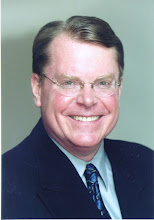I just have to leave it to the Big Brains in Washington to prognosticate on the future of health care reform legislation. I have nothing to add to the white noise.
But here are a couple thoughts that small business people and their friends might find a tad illuminating.
In his final speech to America in 1961, President Eisenhower warned against "the potential for a disastrous rise of misplaced power" among the then-recently-organized relationship between the U.S. Armed Forces and a new industry of private armaments dealers...the "Military Industrial Complex." Because of its economic and political power and pervasiveness into so many sectors of American life, Eisenhower saw how easily this network of military leaders and defense contractors could have outsized influence on politics and policy.
Flash forward to 2010:
The budget for the "military industrial complex" is $782 billion for the fiscal year.
That comprises 23% of budgeted federal spending, and 4.7% of Gross Domestic Product (GDP) for the year. The Federal government spends another $1-1.2 trillion on defense-related activities (the Veterans Administration, Homeland Security, nuclear weapons research) which are financed through other budgetary departments.
Total economic power of the military-industrial complex: $1.982 trillion.
This year, federal spending on Medicare and Medicaid alone are a projected $676 billion. That's 19% of federal expenditures and 4.06% of GDP. Those government expenditures are matched by another $1.99 trillion in private money...from health insurance and Medicare Part B premiums to what we spend on aspirin.
So, the total economic power of the nation's "health care industrial complex:" $2.6 trillion.
How come nobody's warned us about the spectacular rise in economic and political power which has arisen among that health care industrial complex since the mid-1960's? How come we're not all a lot more skeptical of "the potential for a disastrous rise in misplaced power" of the parties involved in the health care debate?
It's not just about the insurance companies. It's about all those providers of products and services who make their livings in the health care sector. As the campaign has illuminated so clearly, those interests have great power to shape events in ways that favor them...and none of it has anything to do with getting paid less...
And another thing...
It's interesting how easy it is, even for experts, to miss the real point.
There has been a lot of (well-earned) outrage directed at big insurers who seem to be taking advantage of the uncertainty in the individual health insurance market by issuing big rate increases to their customers...with the biggest rate increases for those who are actually using their health plans.
Insurers cite many factors to justify their rate increases: the non-group pool is shrinking, they say, as economically hard-pressed individuals decide to go without coverage. That leaves a higher percentage of unhealthy people in the pool, and their utilization rates are higher, thus rates must rise higher, etc.
Okay, but...
For individuals purchasing non-group coverage, somewhere between 30 and 40% of their health insurance premiums relate not to health costs, but to administrative costs. And in general, when they're calculated at all, those costs are calculated as a percentage of premiums.
So when an individual's premiums rise by, say, 25%, the portion of premiums allocated to administration rises 25% as well. In effect, the insurer is giving itself a 25% increase in its compensation, for doing no more work.
As long as we're seeking ways to reduce health care costs without adversely affecting the cost of care, how about focusing on that little bogey: the 25-27% of small group premiums, and the 30-40% of non-group premiums, which insurers pass along as administrative costs?
These are, after all, the same companies which administer the federal employees' health plan for 4-5% of claims costs, and administer self-insured companies' health plans for 5-6% of claims costs...and manage to make money.
There is no doubt that the costs of marketing, selling, enrolling, and underwriting small group and individual coverage is more expensive than for the big guys. But six or seven times as high? Really?
Tuesday, March 16, 2010
The Health Care Industrial Complex, And "Why Don't You Give Yourself A Nice Raise?"
Subscribe to:
Post Comments (Atom)

No comments:
Post a Comment